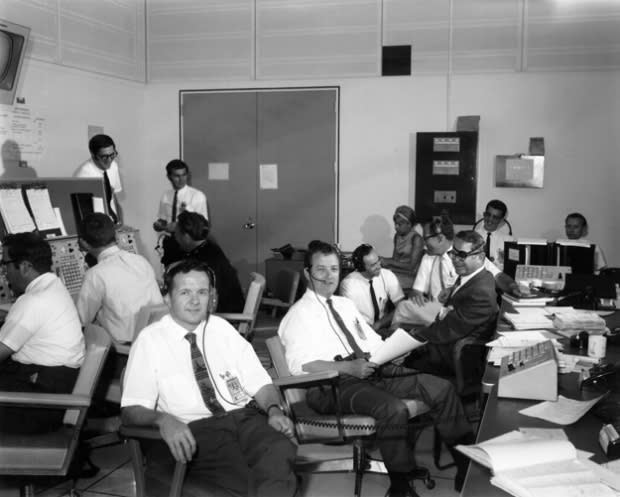Sarnia-Lambton engineer slept during first moonwalk — so the astronauts could come home safely
It took a lot of people to land Neil Armstrong on the moon — including one man who grew up in Sarnia-Lambton, Ont.
While Owen Maynard died in 2000, during the space race he worked as an engineer on the Apollo Lunar Module.
Space historian Chris Gainor said as a child, Maynard was more interested in woodworking before he joined the Royal Canadian Air Force.
"That changed his life," said Gainor. "After the war was over he went to university and got a degree."
According to Gainor, Maynard got into the Apollo program "on the ground floor."
"Owen actually did some of the first sketches of Apollo while they were designing it," said Gainor. "Then after President Kennedy said 'Lets go to the moon,' NASA went through this process to build a lunar module."
Maynard was put in charge within NASA of creating the lunar module, though it was built by an aircraft contractor.
On the stamp
Canada Post issued Apollo stamps in commemoration of the anniversary — including stamps with drawings of the lunar module.
"Those are all his drawings, very early drawings of the lunar module," said Gainor. "Design changed over time."

Building up to landing on the moon
Ultimately, Maynard became the head of systems engineering, focused on making all the different pieces work together.
"The command service module, the lunar module ... they had to work with the launch vehicle and the communications system in the control centre," said Gainor. "He was involved in designing the missions, how the missions went."
Gainor said Maynard worked on deciding how long the astronauts would spend on the moon and the sequence of events that would get them there.

"You can't just sort of build the thing and then launch it for the first time and hope to land on the moon," said Gainor. "You had to build up to it."
In an unusual turn of events, Maynard was asleep when Armstrong took one giant step for mankind.
"Owen came home the night before," said Gainor. "He wanted to be rested" — because lifting off the moon was one of the most dangerous parts of the mission. "That part had never really been tried."
Maynard left NASA in 1970, after the second lunar landing. He retired from engineering in 1992 and lived in Waterloo, Ont. until his death in 2000.

